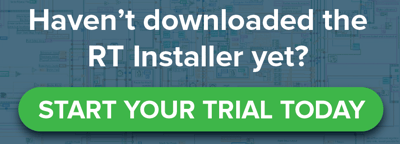Questions to ask before the conception of a LabVIEW Project
(Circle of LabVIEW: Part 1 of 6)
This is Circle of LabVIEW: Conception, the first of six blog posts that describe different stages of the LabVIEW project life cycle from idea to market. Although reading them in order will help understanding the bigger picture, each blog post is self-contained with a small section regarding the "RT Installer," a kind of sample product used in this series.
The conception stage for a project can be thought of as a sort of project purgatory. It may be simply an idea about how to tackle a problem you’re facing or a refined project that will open a new revenue stream. Usually we find ourselves working on solutions somewhere in the middle of this spectrum. Often for control system automation projects our project contact is both a business facing individual and an end user.
Clients often approach us well into the lifecycle of a project, a stage where basic questions have more difficult answers. Common questions we ask as soon as we are introduced are:
- Is this a project or a product?
- How do you see Erdos Miller fitting into this project/product?
- What’s your timeline and how soon do you need a prototype or rather something to deliver to market?
- As a stakeholder, what do you hope to accomplish for yourself with this project/product?
- Who are your end users?
These questions provide a wealth of information that let us know if we’re a good fit, but also if we can meet your expectations or needs. Knowing whether your “idea” is a project or a product makes a big difference in how it’s managed and how we set expectations. We find that in general, products require more effort than projects because the end-users may have needs that can’t be initially identified. Sometimes products, unlike projects, have a fixed window of time where they are profitable or the market exists for the stakeholder.
It’s also pertinent to understand what services the client wants to retain us for, whether that is straight software development or a multidisciplinary project where we work with mechanical engineers or provide both the software and hardware development. During the conception or opportunity phase, we do our best to bring our experience in bringing products to market to the table. With National Instruments LabVIEW, we can bring your idea to market even faster.
Sometimes, we get the opportunity to work for ourselves and, to a degree, see this process from the outside. One of our developers had an idea for a product that would provide identical functionality to National Instruments MAX (Measurement and Automation Explorer) as well as some functionality provided by the National Instruments RAD (Replication and Deployment) tool. The goal for the product was:
- Create a LabVIEW-based software that could install and configure targets outside of MAX (Using System Configuration API)
- Install software without having to have the LabVIEW development environment installed
- Automatically deploy software to one or more targets
We brought this product to completion and will provide supporting material to show how each phase was tackled with the "RT Installer."


